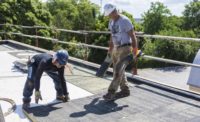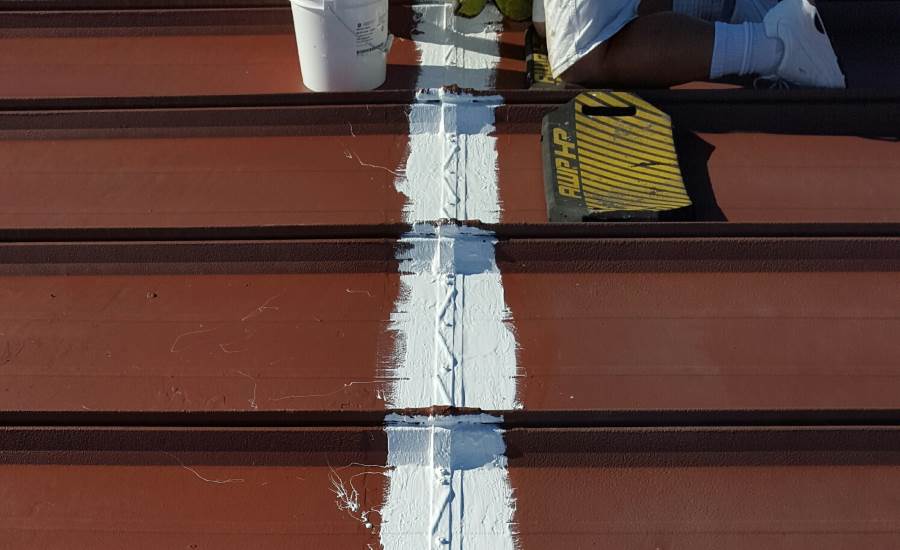Solving Leaks on Low-Slope Metal Roofs


A roof is a demanding place. A normal summer day can see over 100F rise and fall in temperature. On metal, this 100F change can happen in less than a minute in a rain storm. For standing seam roofs with panel straps, this pummeling manifests in failure at the seal at the strap. Ron Hart, President of Hart Consulting Group, saw this immediately.
“Water penetrates or is wicked into the seam. Then it freezes and the expanding ice further pulls the seam apart. And simple heat expansion and contraction can force the leak,” says Hart.
“These seams saw three different attempts to solve the issue. We recognized that the silicone system was the solution,” says Jeff Cleavenger, owner of Freedom Coatings LLC and GE Authorized Applicator. "An acrylic, a polyurethane and hybrid technology had been used—most with fabric reinforcement—to seal the seam. We ground out each of these failed experiments—40 linear miles of seams on this 215,000-square-foot roof."
Lowest Bid Luck
The lowest bid isn't always the best.
“We won this job as lowest bid,” says Cleavenger. “It was lucky for the owner that GE has designed this system to be the highest value. Even with the exceptionally time-intensive process of grinding off the old coating from the seams, I can get the seams re-sealed and get the silicone down cost efficiently.”
"From a myrid of options, we recognized the superior value of the silicone system," Hart says. "We've specified dozens of product systems. GE was a unique fit to this particular set of issues. The coatings are seamless and the roof is now protected from expansion and contraction cycles. What was unique on the project was finding a contractor willing to bite the bullet and grind down all the seams. If they'd have used the silicone system in the first place they'd have saved half the cost and all the headaches leading up to this point."
Time Well Spent
Application partner Freedom Coatings LLC also experienced the benefits of the silicone system. “During the five-week project, we spent only a small portion on coating this 215,000-square-foot roof. A quicker install meant savings—hotel rooms, per-diem expenses, and the opportunity cost of missing other jobs add up fast. With some innovative tooling that we'd designed and built, we got the silicone system required dry film thickness on the body of the panels and on the standing seams," says Cleavenger.
Looking for a reprint of this article?
From high-res PDFs to custom plaques, order your copy today!







